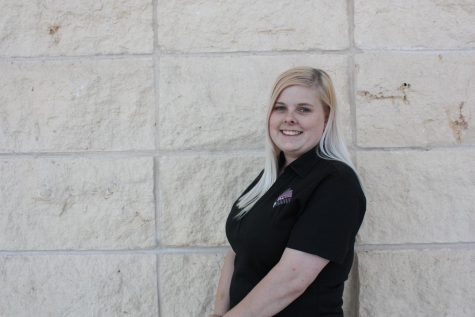The evolution of journalism to the digital age
February 22, 2019
Whether it’s on Facebook, on an app, or an alert on your smartphone, news is everywhere. With a click of a mouse we have everything at our fingertips. People are not relying on the evening news or print newspaper to get their information.
One field that has completely changed with the rise of technology is journalism. Walter Howard has been in the broadcasting field for over 40 years and has worked at News Channel 10 in Amarillo for 38 years. He graduated from the University of Houston where he interned at a station before working for a short time at KGNC radio in Amarillo. In his time, he has seen the field experience change after change.
“Obviously in 40 years, a lot can change in the broadcast industry. With the admin of technology, you see a lot more live work now then you did back then,” Howard said. “It is more of a situation where, it is a lot easier to cover news as it is happening these days than it was back in the day when we were just getting started with video tape.”
Stories are not just told in print stories anymore. Journalists are using other outlets to give people a full look into every story as soon as it is happening. People are wanting to receive the news on their time. The newest information is being looked at through platforms that are on demand. This has also driven Software-defined WAN (SD-WAN) solutions to become increasingly popular as organizations request fast, scalable, and flexible connectivity among different network environments. If you’re not familiar with it, read SD-WAN explained here.
“It is more of an instant gratification now when it comes to news. You are wanting to find out information that’s happening in your community right now instead of waiting for a scheduled newscast,” Howard said.
Sarah Self-Walbrick is the business reporter of the Lubbock Avalanche-Journal and teaches journalism classes at Texas Tech University. Self-Walbrick realizes that for journalism students today knowing how to write isn’t enough. Students have to be willing to dive into everything to keep up with the evolving field.
“The top thing that those interested in journalism can do is learn everything, you really have to be a one-man band nowadays. You need to be able to do your own video, and you absolutely have to be able to write and take photos and get things online and posted on social media,” Self-Walbrick said. “I think the key thing that aspiring journalist can do is just learn everything that they can.”
For junior broadcast journalism student Halle Reid, she is used to journalism in a digital world. She gets the majority of her news from Twitter or Snapchat. In today’s world, she believes that most people her age are using the same outlets to get there information.
“Journalism is definitely more digital today, in my opinion. What used to be printed or broadcasted through television is now on social media before it gets the chance to be written or spoken about it,” Reid said. “However, as someone who is interested in working in this field, I believe in going with the flow and using social media to my advantage. I’m very intrigued with digital news and how much social media is impacting our world today.”
With the rise of digital media, the print world of journalism has been affected. This is one thing that this profession is having to adjust to, including the issue of decreasing newsroom sizes. Changes like this have forced journalists to reevaluate what they are covering for print issues.
“Something that we are trying to do at the AJ, that I am seeing nationally as well, is focusing on journalism that has impact. Yes, we want to cover those community events, and things like that, but we just all have to be more selective these days in what we are using manpower towards,” Self-Walbrick said.
One concern that has risen since journalism has crossed over to other media is the amount of information available. For Self-Walbrick, she believes the rise of digital journalism creates a need for media literacy. People need to be aware if they are getting news from a quality source.
“Obviously there are a lot of bad news sources out there. Media literacy is just key in making sure people are consuming good responsible news,” Self-Walbrick said.
Journalism is about telling the story, journalists are just finding out how to tell it in different ways. Social media and an online presence have increased the constant pace of news going out into the world. However, for Howard, he knows that news never stops and neither do journalists.
“If you get into the journalism profession, it is not just a job it is a way of life. You never stop being a journalist. When you’re out and about, even if it is your day off or you are off the clock, you see a news event happen you are still going to want to get to the bottom of that news event,” Howard said.




